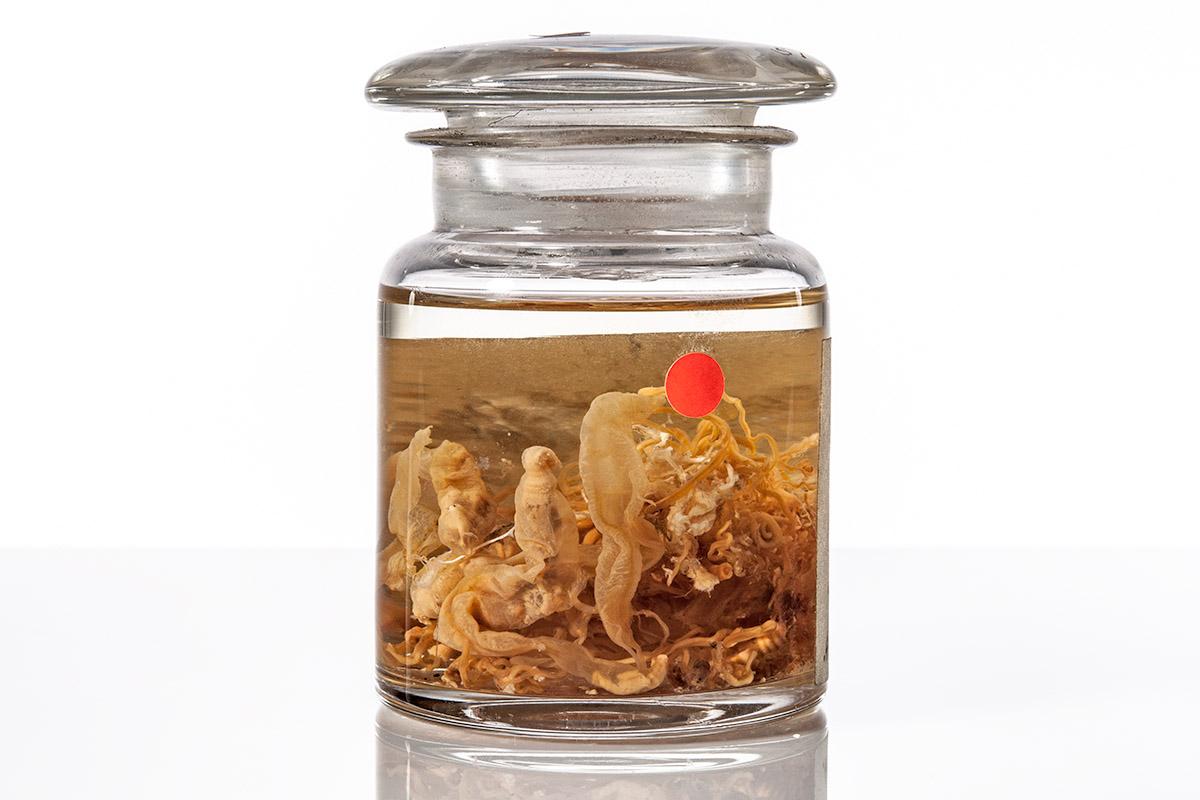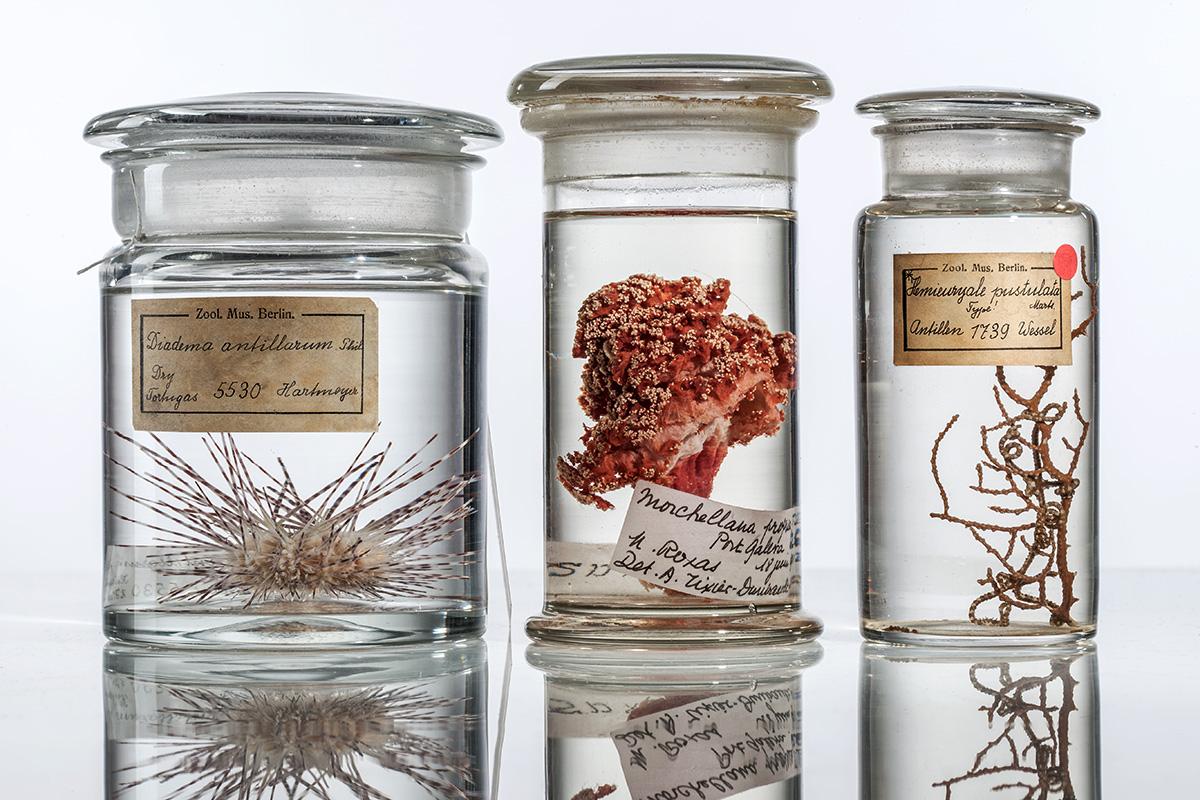The Marine Invertebrates Collection unites twelve large groups of the animal kingdom, comprising 47,000 catalogued collection items. These include sponges (Porifera), Cnidaria, Ctenophora, Kamptozoa, Phoronida, Bryozoa, Brachiopoda, Echinodermata, Enteropneusta, Pterobranchia, Tunicata and Acrania.
The collection is displayed in systematic order and also contains fresh water specimens of individual groups of species (Porifera, Cnidaria and Bryozoa). Approximately 70 percent of all specimens have been preserved in ethanol, while there are also comprehensive dry and microscope slide collections.
Digitisation
The inventory of the collection has been well documented through historical acquisition catalogues and digital databases and is available for research in its entirety. However, not everything is currently researchable online. Selected parts of the collection (e.g. type specimens of sponges, soft corals, gorgonians, echinodermata and bryozoa) are available on the SeSAM website.
History
Large parts of the Marine Invertebrate Collection originate from marine biology expeditions of the 19th and early 20th centuries. The ships Rurik (1815-1817) and Gazelle (1874-1876) that circumnavigated the world as well as the German Deep Sea Expediton of the Valdivia (1898-1899) and the German Antarctica Expedition (1901-1903) deserve to be mentioned.
There are also significant collections of material, including those by Hemprich and Ehrenberg, Klunzinger, Döderlein, Römer and Schaudinn (Fauna Arctica), Kükenthal as well as Hartmeyer (West Indies expedition) and Kühlmann.
Highlights
Jellyfish from the first transatlantic cable
These specimens were found in 1875 stuck to the first functioning transatlantic cable when a torn end of the cable was removed during repair work by contractor Siemens & Halske. On board the repair ship, they were labelled as "Polypos, animal matter" and were preserved in ethanol. They were sent to the Museum and soon, Cnidaria specialist Theophil Studer based his description of a new Siphonophorae genus and the species Bathyphysa abyssorum on these specimens.

Research
The collection is used by numerous in-house and external scientists for their research. Type specimens are in particular demand for comparative studies. Recently, the historical specimens preserved in ethanol have also been used for molecular biological studies. This gives an entirely new significance to the collection, as it can be used as a unique resource for sequence-based biodiversity studies.
Library
The collectian's sub-library consists of historical monographs and a comprehensive collection of reprints that encompass the taxonomic breadth of the collection. The most valuable and antique monographs relating to the collection are kept in the rare books collection of the main library.
